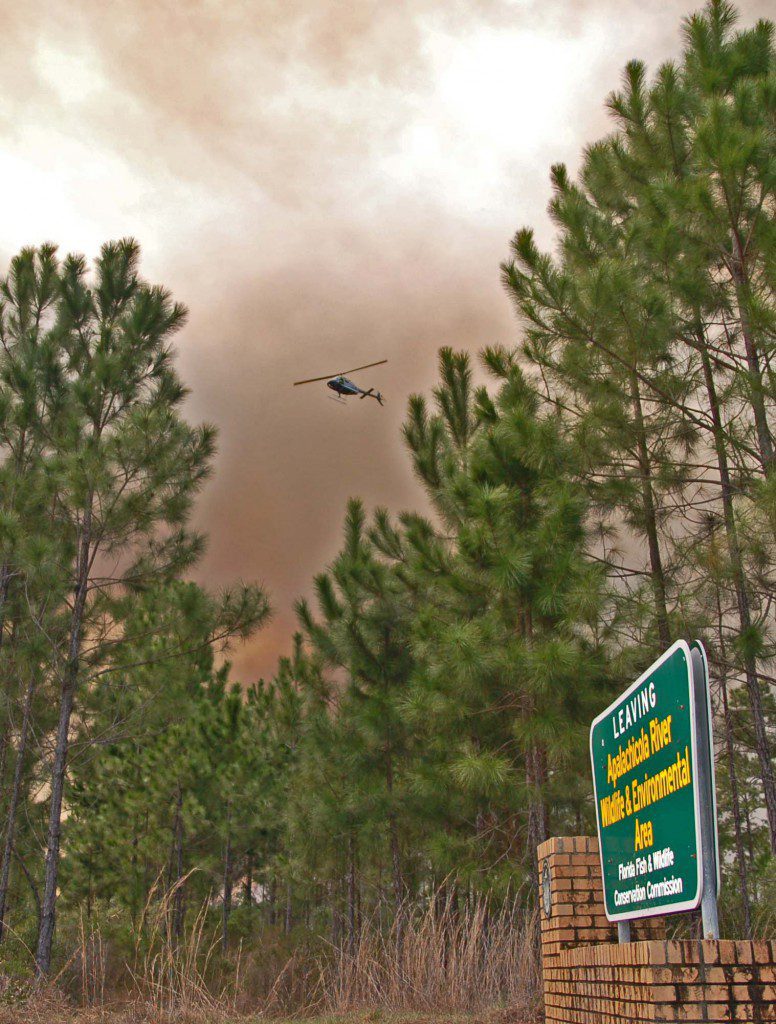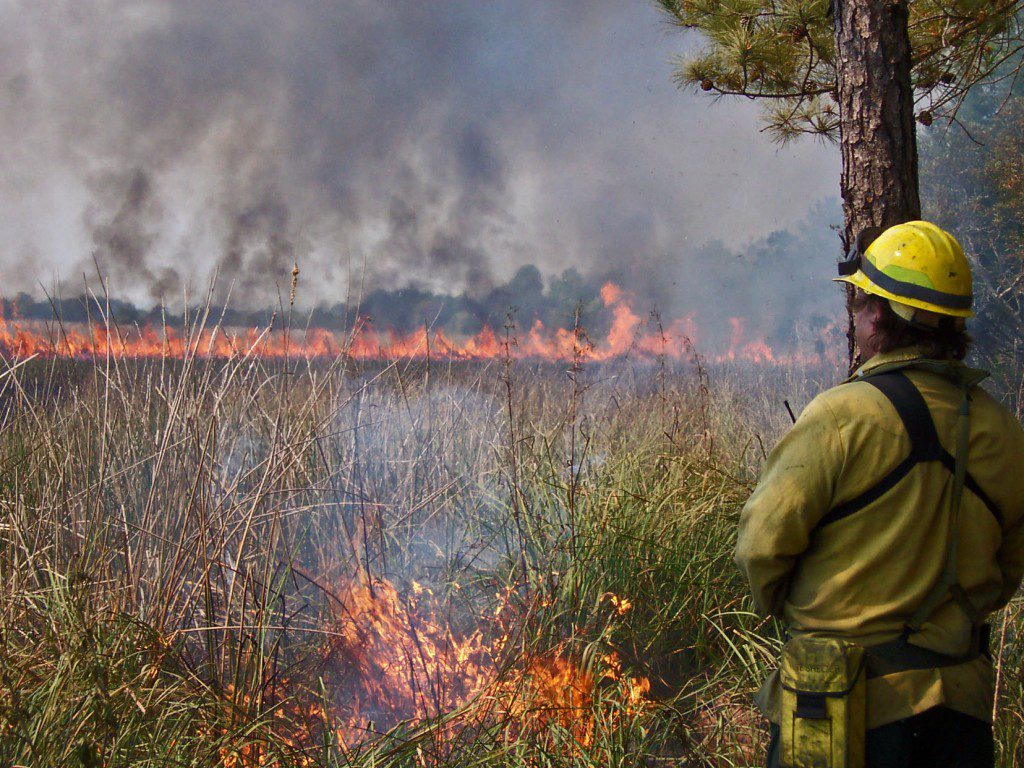Rob Diaz de Villegas WFSU-TV
The longleaf pine/ wiregrass ecosystem was historically common in the coastal plain (low lying flat areas adjacent to the coast) of the Southeast United States. According to the U.S. Fish & Wildlife Service, this ecosystem has seen a 97% decline. In our recent excursion along the Apalachicola River, we visited this habitat and learned about efforts to restore it.
There’s a certain terminology we use when we talk about the wild places of the world. We use words like “pristine,” or “untouched.” When you hike through a forest along the Florida Trail, there are times where you can imagine that you are the first person ever to walk under the trees that you see. Of course, much of the time, not only are you not the first person to have seen the trees, the trees look the way they do due to someone’s careful manipulation. The practice of land management and why it is used can change the way you think about what is “wild.”
The video above is about how the Florida Fish and Wildlife Conservation Commission is using prescribed burning in its restoration of longleaf pine habitats. Longleaf pine had historically thrived because they have the evolutionary advantage of a thick, fireproof bark in what are known as Fire Climax Communities. This is a habitat in which fire (typically started by lightning strikes) is the primary controlling factor, and so lesser equipped competitors to longleaf pine are eliminated. This natural process makes for an ecosystem dominated by the thick barked pines. So why are humans assuming a role usually played by nature?
That goes back to our conception of what is “wild.” That forest you hike through looks untouched, like I said earlier, but human influence reaches even into its deepest reaches. For one, we have roads cutting across the forests, and while there are often large expanses of unbroken forest, paved roads keep fire from spreading as far as it once might have. Another factor is that there is human settlement all around the forest, and uncontrolled fire is a threat to life and property.
Prescribed fire is one tool in the toolset for restoring the longleaf/ wiregrass system. This was the dominant habitat of the southeast, characterized by a wide spacing of trees (wide enough to ride a wagon through, FWC’s Liz Sparks tells me) that allows for a diversity of ground cover plants. These cover plants, as Matt points out in the video above, are attractive to the many species that thrive in a longleaf/ wiregrass ecosystem. Ironically, this ecosystem has been drastically reduced as a result of another type of land management- silviculture. As you’ll see in the video above, timber operations replaced longleaf for slash pine, a faster growing variety of pine with a lesser quality wood but that is far more profitable to grow. The slash pine grew closer together, eliminating the ground cover that is so important to the many birds, reptiles, and amphibians that make the longleaf/ wiregrass system so diverse. That’s why FWC does timber thinning before the burns.
And since this is In the Grass, On the Reef, I did want to mention something I left out of the video, which is marsh burns. Every 4-6 years, they burn the sawgrass in the freshwater marshes on the Apalachicola River system. This clears the plants out and allows for new growth; the less dense grass provides nesting cover for many birds. Wintering waterfowl like canvasback, scaup, and redhead eat submerged vegetation called widgeon grass; periodic burns increase access to this for birds. As with longleaf ecosystems, fire was a naturally occurring, controlling factor. The systems evolved with the plants and animals that could best take advantage of these fire events. Nature may not be able to provide fire to these systems as effectively as it once had; luckily, mankind has flame throwers and ping pong balls full of potassium permanganate.
For more information about these and other Florida Fish and Wildlife land management initiatives, visit their web site.
Watch our latest EcoAdventure, where we visit a lot of this managed land around the Apalachicola River on WFSU’s dimensions– Sunday, February 19 at 10:00 AM/ ET.





2 comments
[…] the photos of the rare plants are located where the tree cover is lighter. This goes back to, once again, controlled burning and its role in clearing out woody growth between longleaf pines. When those […]
[…] plain in this manner. This was a road paved by fire. On this blog, we’ve covered how fire creates the pine flatwoods ecosystem with its widely spaced trees, and how and why mankind has had to replicate a process that had […]
Comments are closed.